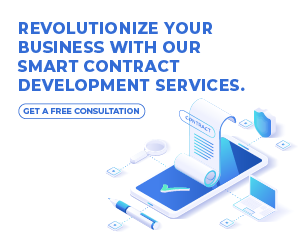In today’s fast-evolving digital economy, organizations increasingly engage specialist firms offering generative AI development services, including custom generative AI development services, enterprise generative AI solutions, generative AI software development company offerings, and generative AI application development. With the global market for generative AI surging and enterprise adoption accelerating, the business opportunity is clear — but so are the risks. This article presents the latest market statistics, trends, and enterprise implications, while touching on how firms such as Vegavid are operating in this space (without overt promotion).
Market Size and Growth: A Rapidly Expanding Opportunity
When decision-makers evaluate working with a generative AI software development company or engaging in generative AI application development, one of the first questions is: “What’s the market opportunity?”
- According to a report by Grand View Research, the global generative AI market was estimated at USD 22.20 billion in 2025, and projected to reach approximately USD 109.37 billion by 2030, representing a CAGR (compound annual growth rate) of ~ 37.6% from 2025 to 2030. Grand View Research
- Another forecast from Fortune Business Insights indicates that the market was valued at USD 43.87 billion in 2023, projected to grow to USD 67.18 billion in 2024, and to as much as USD 967.65 billion by 2032 — implying a CAGR of ~ 39.6% from 2024 to 2032.
- Further, the MarketsandMarkets forecast cites USD 71.36 billion in 2025 rising to USD 890.59 billion by 2032 — a CAGR of ~ 43.4%. MarketsandMarkets
- Demand Sage reports the generative AI market size around USD 37.89 billion in 2025, expecting USD 1,005.07 billion by 2034 — i.e., a ~44% CAGR.
- These ranges reflect variability in methodology, but the consistent message is: significant growth, expanding addressable market, and meaningful enterprise upside.
For any organization looking to invest in generative AI development services, these numbers illustrate the context in which vendors and clients operate.
Adoption and Enterprise Usage
Growth in market size is one thing; actual enterprise usage is equally important for understanding how enterprise generative AI solutions and custom generative AI development services translate into real projects.
- According to the latest edition of the McKinsey & Company Global Survey on AI (2025), 23 % of respondents say their company is scaling an “agentic AI” system (AI capable of multi-step planning/execution), and another 39 % are experimenting.
- In a different study by the Federal Reserve Bank of St. Louis (the “State of Generative AI Adoption in 2025”), the adoption rate of generative AI overall reached ~54.6 % (for the period August 2024-Aug 2025) in the U.S., which is already higher, three years after the launch of the first mass-market product, than the rate of PC or Internet adoption in their analogous early years.
- These signals indicate that enterprises are not just piloting generative AI — they are starting to embed it, which supports the business case for commissioning a generative AI software development company or embedding generative AI application development into their workflow.
Value Creation & Economic Impact
Market size and adoption matter, but what about value created? If you’re hiring a vendor for custom generative AI development services, you want evidence of real business returns.
- McKinsey’s analysis estimates that generative AI could add between USD 2.6 trillion and USD 4.4 trillion annually across 63 use cases spanning 16 business functions (customer operations, marketing & sales, software engineering, R&D).
- They further estimate total economic benefits (including productivity improvements) could be in the range of USD 6.1 trillion to USD 7.9 trillion per year.
- For enterprises looking to adopt enterprise generative AI solutions, this magnitude of benefit underscores the potential ROI. But it also underscores the stakes: implementing the right strategy, talent, data architecture and governance matter.
Regional & Segmental Breakdown
Understanding where growth is happening helps frame priorities for any business seeking generative AI development services.
- A data compilation by Demand Sage shows that in 2024, North America held ~41 % of the generative AI revenue share; Asia-Pacific ~22 %. They further project Asia-Pacific might grow at a CAGR of ~ 27.6% from 2025-2034.
- The software segment is reported to have dominated market share (~65.5%) in one breakdown.
- Different sources report varied market size baselines: e.g., IMARC Group values the market at USD 14.61 billion in 2024, projecting USD 63.06 billion by 2033 (CAGR around 17.5%) for their defined scope.
- What this means for enterprises: growth is global, but geographies differ in maturity; software and services remain dominant; focus on localized use cases and regional talent may be essential when contracting custom generative AI development services.
Enterprise Implications for Decision-Makers
For CIOs and business leaders considering engaging a generative AI software development company for generative AI application development, here are key take-aways grounded in the market stats:
a. Timing matters
The market is ascending fast. Early movers deploying enterprise generative AI solutions may capture disproportionate value. As per the adoption data, over half of companies are already using generative AI in some capacity.
b. Choose vendor partners wisely
Given the size of the opportunity and rising competition, select vendors (such as those offering custom generative AI development services) with proven enterprise capabilities: understanding of data governance, scalable architecture, domain expertise, and integration experience.
c. Focus on value, not hype
Though projections reach into the hundreds of billions of dollars, macro-economic impact may take time, and not all initiatives succeed. McKinsey’s survey shows only one-third of companies have scaled AI programs; most are still piloting. Investment in strategy, talent and operations is key.
d. Leverage real ROI use cases
Data shows the highest value comes from customer operations, marketing/sales, software engineering and R&D. Enterprises commissioning generative AI application development should align with these functions for higher likelihood of success.
e. Prepare for enterprise scale
Market projections assume large scale deployment of generative AI development services and enterprise generative AI solutions across functions and geographies. Scaling requires governance frameworks, data platforms, model maintenance, ethical oversight and skills investment.
How an Enterprise Might Engage a Vendor
To put this into actionable terms: imagine an enterprise wants to implement generative AI for document summarization and report generation at scale. They select a generative AI software development company that offers custom generative AI development services, tailored to their domain. The vendor (e.g., one such as Vegavid) evaluates data readiness, builds a fine-tuned model, integrates into workflow, monitors performance, and then gradually rolls out as an enterprise generative AI solution. Over time, this results in faster report cycles, fewer errors, and allows human staff to focus on strategic tasks rather than repetitive summarization. The market stats above (e.g., trillions in value potential) provide the backdrop for such decisions.
Risks & Considerations
While the numbers are compelling, enterprises should remain grounded:
- Not all pilots convert to scale: McKinsey notes many companies are still experimenting rather than scaling.
- A study by Precedence Research suggests that the generative AI market might reach ~USD 803.9 billion by 2033, implying the huge growth trajectory is still ahead. Precedence Research
- Companies must avoid confusing vendor enthusiasm with validated ROI. Sound evaluation criteria, change management, and enterprise alignment are critical.
Conclusion
The era of generative AI development services is no longer emerging — it’s underway. With global market sizes projected from tens of billions today to hundreds of billions (or even trillions) within the next decade, organisations commissioning custom generative AI development services, adopting enterprise generative AI solutions, and partnering with trusted generative AI software development company providers for generative AI application development are positioning themselves at the leading edge. At a company like Vegavid, for example, that works alongside enterprises to architect and deploy these solutions, this environment presents both opportunity and responsibility.
If your enterprise is exploring how to harness generative AI — whether through strategy, design, or full-scale application development — now is a compelling time to act. Engaging a partner with proven expertise in custom generative AI development services will help you capture value from this rapidly expanding market.



